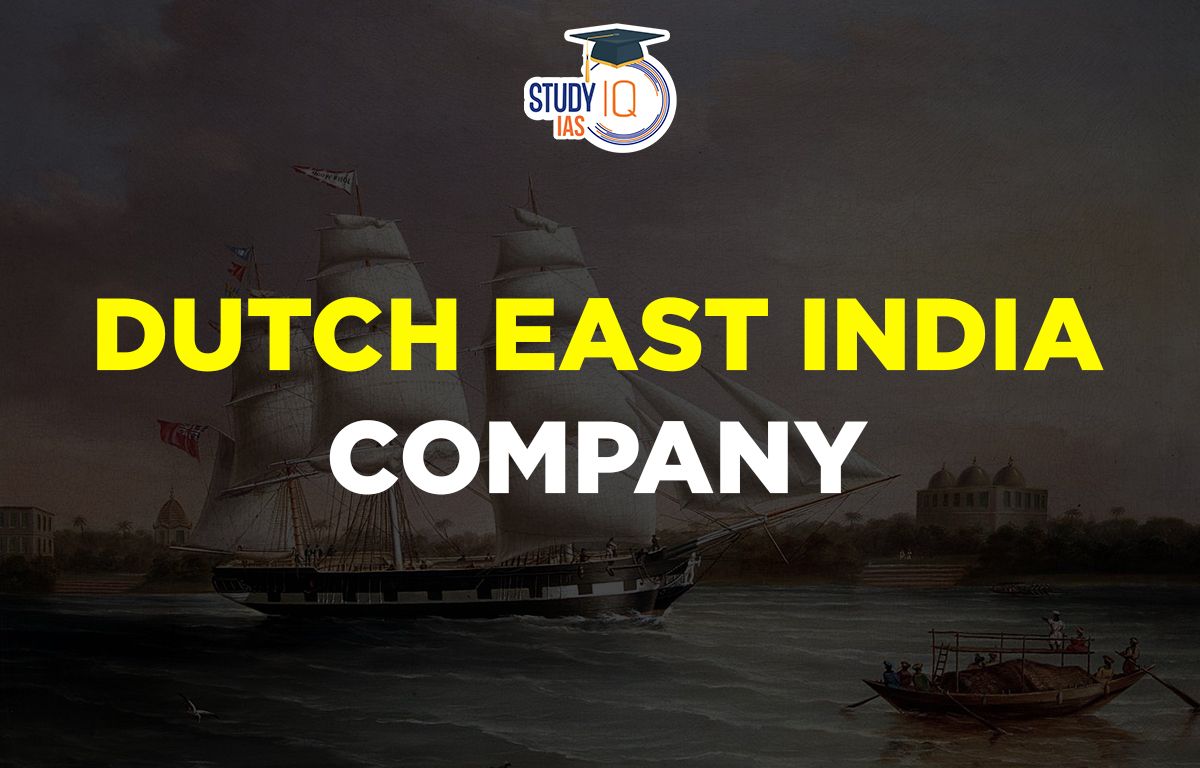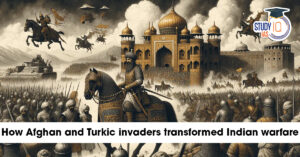Table of Contents
Dutch East India Company
Dutch East India Company was referred to as Dutch Colonies. Towns and business operations in India were under the administration of the Dutch East India Company. More of a geographical than a political force, Dutch India was. The people of Holland are called the Dutch (now the Netherlands). After the Portuguese, the Dutch were the second Europeans to step foot in India.
The United East India Company of the Netherlands received authorization from the Dutch government to conduct business in the East Indies, including India, in 1602. You will learn about The Dutch in this post, which will aid you in your preparation for the UPSC Civil Service Exam.
Read about: Advent of Europeans
Dutch in India History
Commercial considerations compelled the Dutch to travel to the East. Cornelis de Houtman travelled to Sumatra and Bantam for the first time in 1596. In 1602, the States-General of the Netherlands combined many trading companies into the East India Company of the Netherlands. Additionally, this party was given the power to conduct war, negotiate treaties, capture territory, and construct fortresses.
Masulipatnam, Andhra Pradesh, was the site of the Dutch’s first factory, which was founded in 1605. As a result, they established trading hubs across different parts of India. Dutch Suratte and Dutch Bengal were both established in 1616 and 1627, respectively. The Dutch seized Ceylon from the Portuguese in the year 1656. They also took control of the Portuguese forts on the Malabar Coast in 1671 AD.
The Portuguese were defeated by the Dutch at Nagapadam, close to Madras (Chennai), and the Dutch gained control of South India. By controlling the market for black pepper and spices, they were able to command high prices. The principal Indian items that the Dutch dealt with were cotton, indigo, silk, rice, and opium.
Read about: Portuguese in India
Dutch East India Company Establishment
The Dutch East India Company, known in Dutch as the Vereenigde Oost-Indische Compagnie or VOC, is recognised as the first truly global company. It was also the first business to offer shares. It was the first company to be given permission to engage in colonial activities like waging wars, carrying out executions, creating money, and founding colonies.
This company performed miracles in India and Indonesia for two centuries, but the ostentatious acronym VOC was changed to Vergaan Onder Corruptie, which means “marred by corruption.” Indonesia served as the first permanent commercial base for the Dutch East India Company, formerly known as the “United East India Company,” which was founded in 1602.
They established their first factory in India in Masulipatnam in 1605, and then factories in Pulicat, Surat, Bimilipatam, and Chinsura in 1610, 1616, 1641, and 1653. In Pipli, Bengal, they built a factory, but it was eventually taken down. The main objective of the Dutch was to dethrone the British and Portuguese mercantile empires from Southeast Asia and India, and they were successful in doing so, replacing the Portuguese as the dominant force in European trade.
They built a factory in Pulicat in 1610, which ended up being their main centre of operations. It was subsequently given the name Fort Geldria. The brutality and intolerance of Albuquerque’s horrible successors hurt the Portuguese, but the corruption of the expanding English and French soldiers and their allies helped the Dutch defeat the Portuguese.
The Dutch were expelled from India as a result of heavy interference by the Dutch government. Between 1638 and 1658, the Dutch were able to expel the Portuguese from Ceylon. Malacca was subdued by them in 1641. In 1652, they were successful in taking control of the Cape of Good Hope. The Dutch East India Corporation reached its zenith in 1669, when it had 50,000 employees, 150 commercial ships, 40 warships, and a 10,000-man army, making it the greatest private company in the world at the time.
The most important thing that happened in India was the Battle of Colachel, which took place in 1741 between the troops of the State of Travancore and the Dutch East India Company. The Dutch hegemony ended as a result of this great European power’s failure in India. Insolvency and corruption led to the final liquidation of the Dutch East India Company in 1800. Dutch dominance remained strong in Indonesia even though it had diminished in India.
Dutch East India Company Factories
The Dutch founded their first factory in Masulipatnam in 1605 after arriving in India (Andhra Pradesh). They later built up commercial hubs in other parts of India, endangering the Portuguese. They made Nagapadam their main stronghold in South India after capturing it from the Portuguese close to Madras (Chennai).
The Dutch built factories around the Coromandel Coast, as well as in Gujarat, Uttar Pradesh, Bengal, and Bihar. In 1609, they built a factory in Pulicat, a town north of Madras. Their other significant Indian factories included Surat (1616), Bimlipatam (1641), Karaikal (1645), Chinsurah (1653), Baranagar, Kasimbazar (near Murshidabad), Balasore, Patna, Nagapatam (1658), and Cochin (1663).
They participated in the redistributive or carrying trade by transporting various goods and trade from India to the islands of the Far East. Among the goods they conveyed were indigo from the Yamuna valley and Central India, textiles and silk from Bengal, Gujarat, and the Coromandel, saltpetre from Bihar, opium, and rice from the Ganga valley.
Dutch East India Company Decline
The Dutch were drawn into the trade of the Malay Archipelago. In addition, communications between Surat and the new English town of Bombay were broken during the Third Anglo-Dutch War (1672–1744), which led to the Dutch forces capturing three homeward-bound English ships in the Bay of Bengal.
The Dutch ambitions in India were put an end by the English counterattack, which resulted in the Dutch defeat at the Battle of Hooghly (November 1759). The Dutch were more concerned with trade than with creating an empire in India. They made a lot of money from the Indonesian Spice Islands, which was their main area of commercial interest.
Dutch East India Company UPSC
Towns and business operations in India that were under the administration of the Dutch East India Company were referred to as Dutch Colonies. More of a geographical than a political force, Dutch India was. The Dutch were the European colonial powers that entered India with the shortest stay, followed by the Portuguese and the English. Dutch East India Company is comprehensively explained in this article for UPSC preparation.


 Birsa Munda Birth Anniversary 2025: Life...
Birsa Munda Birth Anniversary 2025: Life...
 Military Innovations of Afghans and Turk...
Military Innovations of Afghans and Turk...
 Self-Respect Movement, History, Objectiv...
Self-Respect Movement, History, Objectiv...

























